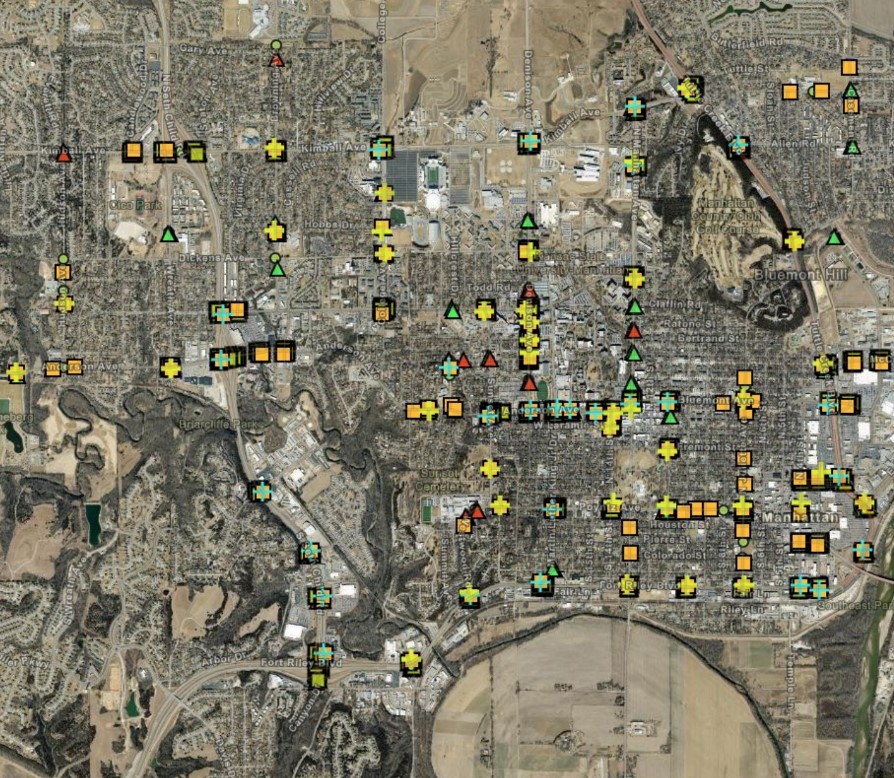

Manhattan residents should notice more efficient traffic lights in the near future.
City Engineer Brian Johnson presented city commissioners Tuesday with the proposed traffic system master plan, with a goal of making traffic signals communicate better across Manhattan.
“Your major arterials where you can get a long run, you can have a corridor plan that sequences that platoon of traffic through, so we did update our corridor timing plans with this master plan,” he said. “Hopefully they’re going to be working a little bit better.”
Johnson added that city crews update their traffic data every two years, a slight improvement from every five years which was the previous norm.
Johnson pointed out that to increase efficiencies, crews only modify timing on green lights, but never yellow or red.
“At an intersection if if we have a 3.7 second yellow light it’s always the same time. We never vary yellow and we never vary read, you vary green,” he said. “We don’t want to vary yellow or green because you want the driver to get used to the lights. You don’t want to vary those times because then that leads to driver confusion.”
Updating existing hardware and lights requires funding which the city has yet to allocate from the General Fund. The city currently budgets $1.3 million annually and the city’s current street maintenance sales tax ends in 2026. Johnson suggested one option is to increase that a half a percent, which could potentially generate an additional $250,000 to $500,000 per year.
A big part of the new plan is through underground fiber optic cables. City Commissioners supported cooperating when burying fiber-optic cable. Olsson engineer Kurt Rotering says they looked at two options, both of which include a fiber backbone.
“The first one uses fiber to build out all the signals. The second one uses fiber for the main backbone and then uses wireless, which is a cheaper system to connect to the further signals and then pull them in,” he said.
City Commissioner Peter Oppelt suggested coordination with the physical installation as they’re going through.
“If they’re digging a hole and we put some conduit down there too, I think there might be an opportunity for that,” he said.
Rotering says building up the communications network helps safeguard the city against future technology changes.
“If you have a consistent budget for replacing signals and your equipment, you don’t want to not do anything for 15 years and then have 10 signals that are failing because then you have to have a huge chunk of your budget to replace those. You want to stay ahead of those signals,” he said.
The traffic system master plan wasn’t finalized on Tuesday’s meeting, but the commission agreed safety for pedestrians is a priority.
“Enforcement only goes so far and you know it only takes one person not being enforced to have a really bad accident,” Oppelt said.
Public works is nearing completion on the traffic systems plan.
The post Manhattan Public Works nearing completion of traffic system master plan appeared first on News Radio KMAN.

